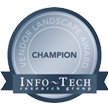Information technology (IT) has penetrated many industries, the healthcare industry being one of them, and has become an essential component of everyday functions. Healthcare organizations continue to integrate IT and medical devices into daily clinical treatment processes to manage information about healthcare for patients and patient groups. It is critical that IT teams ensure efficient service delivery, proper device and software accountability among employees, and adherence to international laws and regulations such as HIPAA to protect patient privacy and rights.
Along with patient treatment, the entire service experience patients face matters. A simple process failure or an equipment failure can hinder the service delivery process and could even be life threatening. This is why IT service desks and other business functions such as HR, payroll, and finance need to ensure the continuous availability and quality of these services.
Following the pandemic, the IT service desk team grew more important than ever. New equipment and facilities were introduced like machines with enhanced AI and ML capabilities, IoT devices, additional servers, and more to speed up processes, and major system upgrades were carried out to ease the strain on servers resulting from the increase in patient information as COVID-19 cases increased exponentially. Virtual care, virtual hospitals, and remote work were also introduced and quickly implemented in several healthcare organizations. To ensure service continuity, healthcare organizations needed an effective IT and business service management platform that supports their mission-critical processes and helps deliver enterprise-grade services to their employees.
Without service management software, to ensure service continuity, healthcare organizations can face a number of challenges. Some of these challenges include:


















